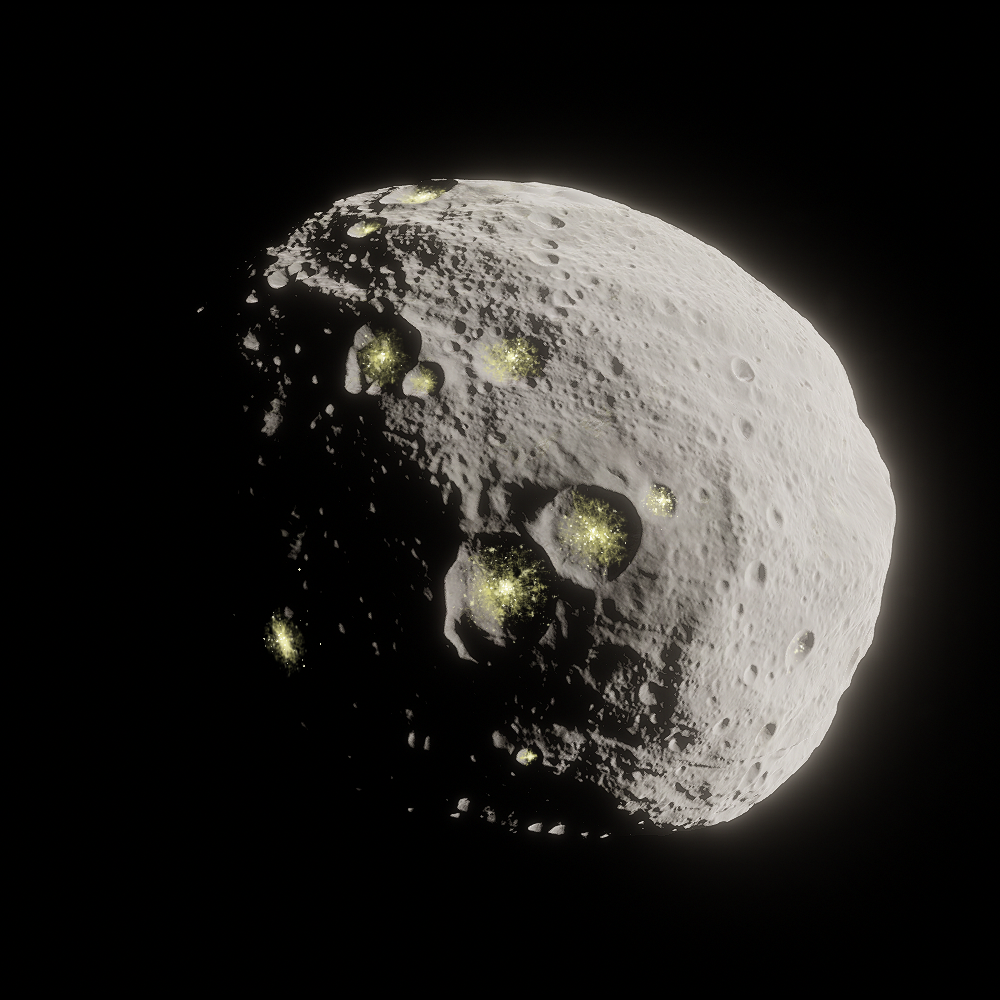Vesta
Vesta (minor planet designation 4 Vesta) is a rocky asteroid in the Sol Belt, second only to Ceres in both mass and volumetric size. It was the first asteroid ever inhabited by humans. Given these facts as well as its convenient orbital location in the ecliptic range of the main Belt, Vesta is a hub of activity in this part of the system, supplying asteroid miners with the food, water, fuel, and raw resources needed for their highly profitable trade.
Geography
Location
Vesta occupies a near-circular, slightly inclined orbit in the main Belt, with an average solar distance of 2.4 astronomical units and an inclination of roughly 7 degrees with respect to the ecliptic. Its location at the center of the Belt take it past most other main belt objects at various points and even capturing a number of much smaller bodies in trojan orbits, making it highly convenient as a base of operations for asteroid mining endeavors. Additionally, the relatively minor ecliptic inclination of its orbit makes it an excellent sling for interplanetary ships trying to reach highly inclined bodies in the Belt outside of their ecliptic crossings.Surface
Vesta's surface is rough and marred by a random assortment of craters and remnant tectonic features -testaments to the object's tumultuous birth phase. In one of the largest of these impact basins, a crater called Marcia located on the approximate equator, lies the oldest settlement in the Belt: Hestia, born of Project Hearth in the early 21st century CE. Though the Belt's busiest and most populous city is Proserpina, on Ceres, Hestia remains an important outpost of human society in the often lonely expanse of the solar asteroid belt.Natural Resources
Vesta is one of only two known asteroids to have a stratified internal geology, thanks to its history as a failed protoplanet. Unlike Ceres, the surface of Vesta is not covered in clays; rather, the outer layer of the asteroid is simply igneous regolith, composed of various mineral oxides not particularly useful for mass smeltery. The mantle, too, is largely olivine and other volcanic minerals. However, the core of the asteroid is almost pure nickel-iron: a tantalizing prize for shafthoppers. Volatiles, including water, are scarce on the object, and must be imported from elsewhere.Vesta from low orbit. The focus of the image are the capital city Hestia and its twin city Hearth, situated in Marcia Crater Complex.
Archive Data
HAZARDS
PHYSICAL CHARACTERISTICS
HABITATION INFORMATION






Comments